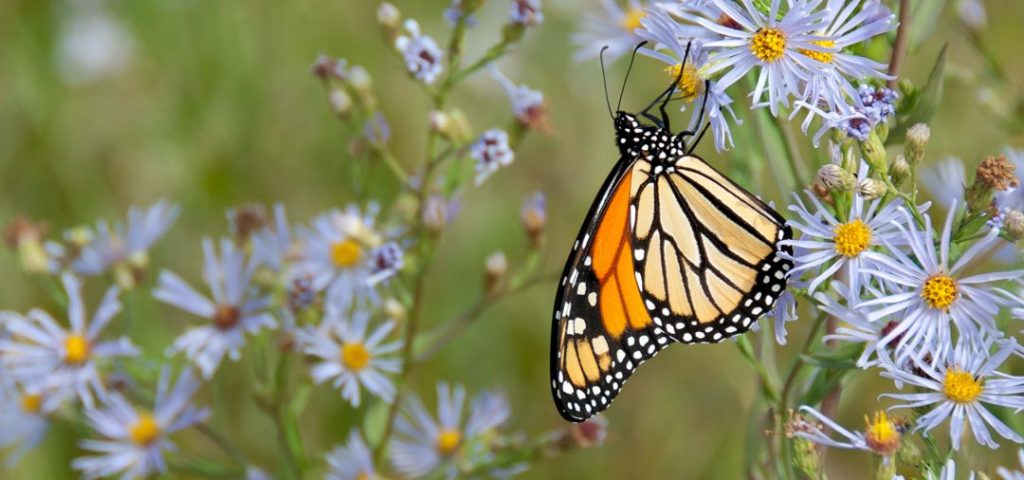
First thing you need to know: The Butterfly Effect is real and I am living proof. I am obsessed with Monarch Butterflies – plain and simple. I’m obsessed with attracting them to my yard, preserving them as the magnificent species that they are, and with planting milkweed in my yard to make sure I see them up close AND personal so that I can observe every stage of their lifecycle! (Mini lesson on the four stages of the Monarch Butterfly life cycle: The egg, the larvae (caterpillar), the pupa (chrysalis), and the adult butterfly. In March and April, the eggs are laid on milkweed plants. They hatch into baby caterpillars, also called the larvae. It takes about four days for the eggs to hatch.)
Second thing you need to know: how my obsession started. It began with a podcast interview with a guest named David Mizejewski from the National Wildlife Federation, about planting wildlife gardens and attracting pollinators. I was hooked and knew I had to find some milkweed plants – immediately! It was the wrong season by about 6 months, but not to be deterred, I located one that was in the compost heap at a local nursery. I was bound and determined to nurse it back to life. And so, I did. I was instructed to bring it inside if the temperature was going to dip below 40 degrees. I was hyper-vigilant and brought my plant in (with very few leaves) one night in late December. Two days later, early in the morning, and alone in the quiet of my family room, I freaked out when I noticed ALL the leaves were gone! Upon closer inspection, I realized there were FOUR caterpillars crawling all over the plant eating whatever little was left of my solitary milkweed. Now what?
Well, what unfolded was a series of somewhat both comical and intense events involving our entire family to “save the caterpillars.” It wasn’t easy but thanks to the tenacity and determination of my daughter Katie, we prevailed and joyfully experienced the gift of observing two pupas emerge as adult butterflies. We observed the pupa (chrysalis) daily and were blessed that Katie noticed when the action started and was able to photograph quite a few stages of the “birth.” It was magic.
The third thing you need to know: The butterfly effect can happen to you! And I hope it does. Watching Nature work her magic draws you in, keeps you there and makes you want to be a part of that wonder, be a part of the pollinator action. Our entire family got engaged with the four stages of the Magnificent Monarchs life cycle during every step – even when some of us were out of town and had to connect via Face Time. When all the leaves were gone, Katie researched to find out what else the caterpillars would eat besides milkweed. Butternut squash to the rescue thanks to MGW newsletter contributor, Frances King, who is obsessed with gardening (read more from Frances here). If this doesn’t make a compelling case for connecting with nature, what does?
Simple Call to Action: PLANT MILKWEED!!! This single act will spark great joy, attract Monarch Butterflies, help pollinate other flowers in the area, connect you with nature, help preserve a species that is severely at risk and help support the locally owned nursery from which you purchase them! There is absolutely no downside! We are planting 8 plants in our yard very soon so stay tuned for updates.
If you do get the butterfly bug, it would delight me beyond measure to hear your story or look at any pictures you care to share!
 From about the age of five, Gina has been on the path of being a disruptor for good. A dreamer at heart, Gina is madly and passionately in love with this great planet of ours and is tireless in her efforts to preserve it.
From about the age of five, Gina has been on the path of being a disruptor for good. A dreamer at heart, Gina is madly and passionately in love with this great planet of ours and is tireless in her efforts to preserve it.